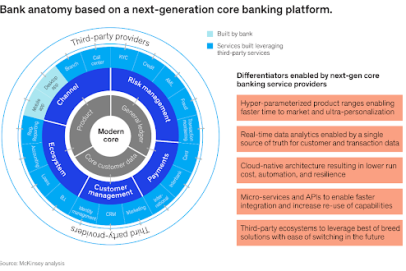Business process analysis – The key to success in process automation & operational optimization
In the quest for operational excellence, businesses are constantly seeking ways to streamline processes, increase efficiency, and drive growth. At the heart of this pursuit lies Business Process Analysis (BPA), a systematic approach to understanding, analyzing, and optimizing organizational workflows.
1. Understanding Business Process Analysis
Business Process Analysis (BPA) involves the systematic examination of an organization’s workflows, procedures, and activities to identify inefficiencies, bottlenecks, and areas for improvement. It encompasses a range of techniques and methodologies, including process mapping, data analysis, stakeholder interviews, and performance metrics evaluation. By gaining a comprehensive understanding of existing processes, businesses can identify opportunities for automation, optimization, and innovation.
2. What makes Business Process Analysis indispensable in the realm of automation projects?
Identifying automation opportunities
First and foremost, BPA provides a holistic view of an organization’s operations. By mapping out processes from end to end, businesses gain a comprehensive understanding of how different functions interconnect and impact overall performance. This allows for informed decision-making when selecting areas for automation, ensuring that investments are directed towards initiatives with the highest potential for return on investment.
Streamlining workflows
BPA enables businesses to streamline workflows by identifying and eliminating redundant steps, reducing cycle times, and improving process efficiency. By optimizing workflows before automation, organizations can ensure that automated processes are lean, efficient, and effective.
Ensuring alignment with business goals
BPA ensures that process automation initiatives are aligned with strategic business objectives. By aligning automation efforts with organizational goals, businesses can maximize ROI, drive value, and achieve sustainable growth.
Driving continuous improvement
BPA is not a one-time exercise but a journey of continuous improvement. By engaging employees in ongoing analysis and optimization efforts, organizations can create a culture of continuous improvement where change is embraced as a catalyst for growth. Through regular reviews, updates, and refinements, organizations can ensure that processes remain aligned with business goals and objectives. This drives efficiency, agility, and competitiveness.
Fostering collaboration
BPA thrives on collaboration, bringing together stakeholders from across departments to analyze, evaluate, and optimize organizational workflows. By engaging employees at all levels in the analysis process, valuable insights are unearthed, leading to the identification of bottlenecks, inefficiencies, and areas ripe for improvement. This collaborative approach not only fosters cross-functional communication and alignment but also cultivates a shared sense of purpose and ownership among employees.
Breaking down silos
One of the key benefits of BPA is its ability to break down silos and foster collaboration across departments. By bringing together individuals with diverse perspectives, expertise, and experiences, BPA enables organizations to gain a comprehensive understanding of their processes and identify opportunities for optimization. This cross-functional collaboration not only facilitates knowledge sharing and skill development but also drives innovation and creativity.
Mitigating risks
BPA helps businesses identify potential risks and challenges associated with process automation, such as data security concerns, regulatory compliance issues, and organizational resistance to change. By conducting a thorough analysis upfront, potential pitfalls and challenges can be identified and addressed proactively. Hence, BPA enables businesses to anticipate and navigate obstacles with confidence, minimizing disruption to operations.
In essence, BPA is the compass that guides organizations toward automation success. By illuminating the path forward, BPA empowers businesses to harness the full potential of technology in driving efficiency, innovation, and competitive advantage. In an era defined by digital transformation, the strategic adoption of BPA is not just a choice but a necessity for organizations seeking to thrive in the ever-changing business landscape.
3. A comprehensive guide to identifying processes for automation in your business
Evaluate process
Begin by conducting a thorough assessment of all existing business processes. High-volume, repetitive tasks with standardized rules are prime candidates for automation. Look for processes that consume significant time and resources but offer little added value from human intervention.
Identify pain points and bottlenecks
Pinpoint areas within your processes prone to errors, delays, or inefficiencies. These pain points often represent low-hanging fruit for automation. Whether it’s manual data entry, lengthy approval cycles, or communication silos, addressing these bottlenecks can yield immediate benefits through automation.
Consider ROI and business impact
Evaluate the potential return on investment (ROI) and business impact of automating each process. Look beyond cost savings to consider factors such as improved accuracy, faster turnaround times, and enhanced customer satisfaction. Prioritize processes that offer the greatest potential for ROI and align with strategic objectives.
Assess technological feasibility
Determine the technological feasibility of automating each process. Consider factors such as data availability, system compatibility, and security requirements. Evaluate whether existing tools and technologies, such as Robotic Process Automation (RPA), workflow automation platforms, or Artificial Intelligence (AI), can be leveraged to automate the identified processes.
Prioritize processes for automation
Once you’ve identified a pool of potential candidates for automation, prioritize them based on predefined criteria such as ROI, business impact, and technological feasibility. Create a roadmap that outlines the sequencing and timeline for automating each process, taking into account resource availability and dependencies.
Start small first
Begin your automation journey by targeting a few high-impact processes for initial implementation. Start small to demonstrate quick wins and build momentum within the organization. As you gain experience and confidence, gradually expand the scope of automation initiatives, performing and refining along the way.
Monitor and measure performance
Establish key performance indicators (KPIs) to track the effectiveness and impact of automated processes. Monitor metrics such as cycle time, error rates, cost savings, and customer satisfaction to gauge success. Continuously evaluate and optimize automated workflows to ensure they remain aligned with evolving business needs.
Embrace continuous improvement
Automation is not a one-time endeavor but a journey of continuous improvement. Encourage a culture of experimentation and innovation, where employees are empowered to identify and automate inefficient processes. Foster cross-functional collaboration and knowledge sharing to drive ongoing optimization and innovation.
4. The framework of an automation project
- Process identification: Survey & define candidates for RPA
- Process prioritization: Classify & prioritize automation projects
- Automated process optimization: Standardize the process, input, and output for automation
- Development & deployment: Design, implement robots, deploy to production
- Operation & maintenance: Operate, monitor, maintain & enhance
5. Conclusion
As we look to the future, the importance of Business Process Analysis will only continue to grow. As technologies such as AI, Machine Learning, and RPA become increasingly prevalent, the need for rigorous analysis and optimization of business processes will be paramount.
Exlusive article by FPT IS expert
Duong Viet Tung
akaBot COO, FPT IS












